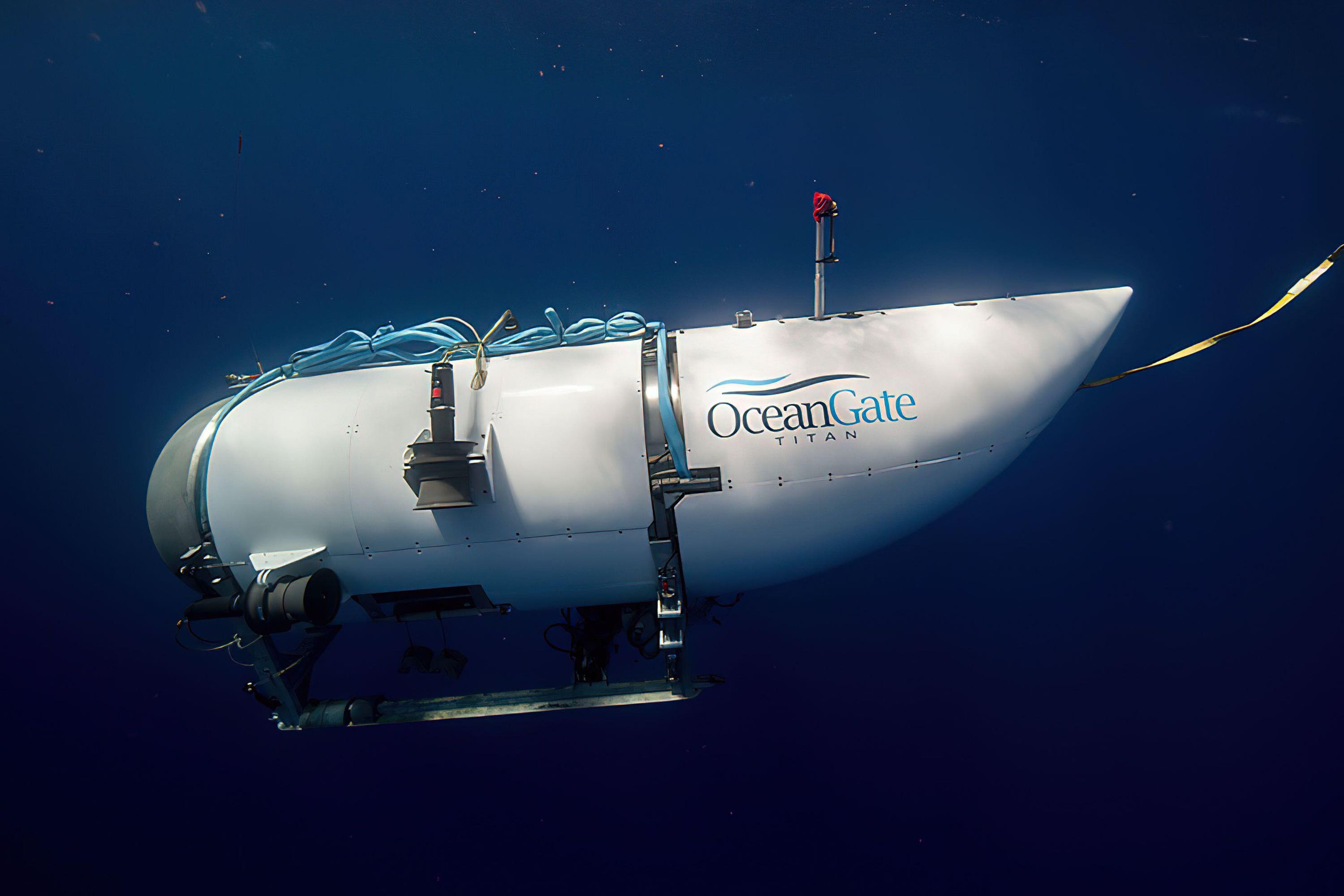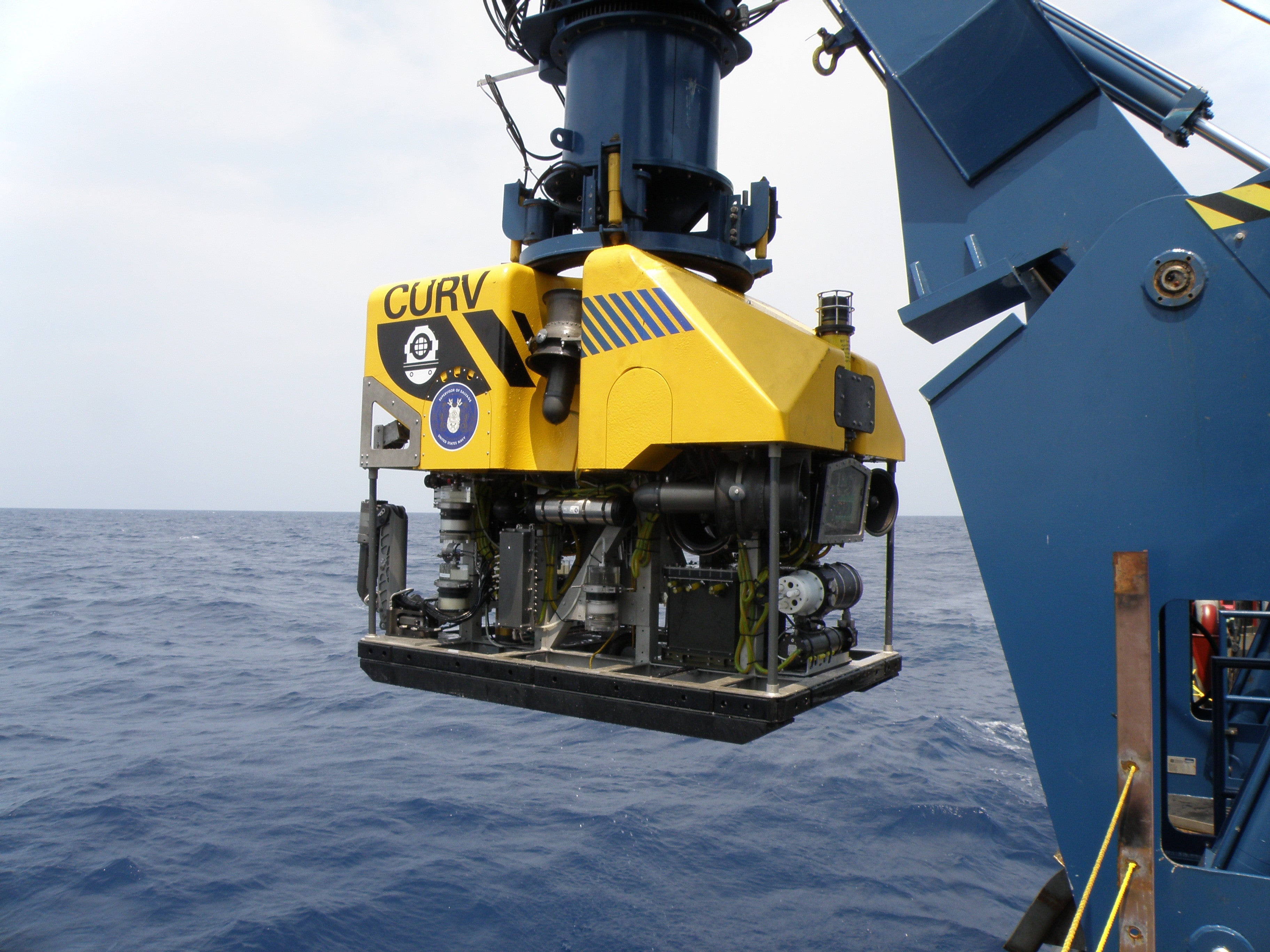It was to be a once-in-a-lifetime trip, travelling to the ocean floor with a chance to view what few people have – the 111-year-old wreck of the Titanic.
By all accounts the British billionaire explorer, Pakistani-British father and son, French diver and OceanGate Expedition’s chief executive boarded the submersible, named the Titan, with a sense of adventure and excitement.
But in a chilling echo of the doomed vessel, the expedition quickly took a tragic turn.
Follow the latest updates on the Titanic submersible
An hour and 45 minutes into the voyage, the submersible lost contact with the surface ship, around 900 miles east of Cape Cod, Massachusetts.
For four days a frantic search-and-rescue mission was carried out to determine whether the sub and its five-man crew had survived.
Oxygen supplies were expected to run out at 8am ET (1pm GMT) on Thursday – effectively creating a deadline for lives to be saved.
There was a glimmer of hope as Canadian aircraft searching for the missing sub detected intermittent banging noises from the vicinity where it was last located. The crew heard banging sounds every 30 minutes on Tuesday and again four hours later, after additional sonar devices were deployed.
But the rescue mission ended in tragedy: The five crew members had died in a “catastrophic implosion”, the US Coast Guard announced on Thursday.
Officials are continuing to investigate the debris site although the bodies of the five may never be recovered. Here’s what is known about the tragedy:
What happened?
On Sunday morning at 9am Atlantic Daytime Time (8am EDT), the Titan, a submersible owned by OceanGate Expeditions, set off on its excursion to the Titanic’s underwater grave with research vessel, the Polar Prince.
The expedition began with a 400 nautical mile journey out into the Atlantic Ocean about 900 miles off the coast of Cape Cod, Massachusetts.
The submersible was released from the Polar Prince and began its descent 13,000 feet below the water’s surface to the wreckage.
The Titan was supposed to transmit a signal back to the Polar Prince every 15 minutes but it lost contact around 10.47am EDT, one hour and 45 minutes into the journey.

The OceanGate Expeditions submersible vessel named Titan
Exactly what happened to the sub remains a mystery but the US Coast Guard said on Thursday that debris “consistent with a catastrophic loss of the pressure chamber” had been found.
Rear Admiral John Mauger said there did not appear to be a connection between the underwater noises detected during the search-and-rescue mission and the location of the debris on the seafloor.
The bodies of the five passengers may never be recovered from the ocean, the US Coast Guard said.
“This was a catastrophic implosion of the vessel, which would have generated a significant broadband sound down there that the sonar buoys would have picked up,” Mauger said.
OceanGate Expeditions alerted the US Coast Guard around 5.40pm EDT after the missing sub failed to surface at the expected time. Immediately, a search effort began.
Where did it go missing?
It is unclear where the sub went missing but the US Coast Guard searched 900 miles east of Cape Cod, where the Titanic shipwreck lies.
The Titanic sits approximately 12,500 below the surface of the Atlantic Ocean, roughly 380 nautical miles south of Newfoundland, Canada and 1,240 nautical miles east of New York City.
The shipwreck’s coordinates are 41º43’32”N, 49º56’49”W.
Rescue teams from several countries spent days searching thousands of square miles of open ocean with planes and ships for any sign of the 22-foot (6.7-meter) Titan.
The US Coast Guard said that it was searching in depths of “roughly 13,000 feet”.
Rear Admiral Mauger said the area where the submersible went missing was remote, making the search challenging.
He also said it was too early to tell when the vessel’s failure occurred. The search operation had sonar buoys in the water for more than three days and had not detected any loud explosive noise during the period.
The buoys picked up some sounds on Tuesday and Wednesday which temporarily offered hope that the crew on the Titan were alive and banging on the hull.
But officials said analysis of the sound was inconclusive and that the noises might not have emanated from the Titan at all.
The world’s deepest search-and-rescue mission
Multiple agencies and countries, and both private and public organisations, desperately worked to find and rescue the five people onboard the Titan.
The search was unprecedented, making it the deepest underwater search-and-rescue mission ever.
Efforts were led by the US Coast Guard in Boston, and also involved the Canadian Coast Guard, Canadian Armed Forces, and US Navy among others. The UK sent RAF planes.

A US Navy Curv-21, an unmanned submersible vessel that can reach a depth of 20,000 feet, is being used in the search for the missing Titanic wreck vessel
The US Coast Guard deployed two C-130 aircrafts, the New York Air National Guard deployed another C-130, the Canadian Coast Guard deployed one C-130 and one P-8 aircraft.
In addition, several Canadian Coast Guard ships, a French research vessel L’Atalante and commercial vessels were used in the search.
The Royal Canadian Navy also deployed HMCS Glace Bay with a medical team specialising in dive medicine. Onboard was a six-person mobile hyperbaric recompression chamber used to treat or prevent decompression sickness.
The Deep Energy rescue ship carried two remote-operated vehicles (ROVs) capable of operating to a depth of 3,000m.
The John Cabot, which has “side-scanning sonar capabilities”, the Skandi Vinland and the Atlantic Merlin also joined the search on Wednesday, the US Coast Guard said on Twitter.
Despite the multi-agency mission, David Concannon, an attorney and explorer who pulled out of the Titanic expedition at the last minute, claimed that the rescue efforts were hampered by red tape, bureaucracy and a lack of urgency by the US government.
British company Magellan Limited had a deep-sea submersible craft “ready to support” the mission, with the ability to reach depths of 6,000 metres and experience of visiting the Titanic wreckage.
But the US First Coast Guard District told The Independent it had not requested assistance from the firm as the vessel was too far away.
Banging noises overheard
A Canadian P-8 aircraft reportedly detected intermittent banging noises from the area the submersible disappeared on Tuesday and Wednesday.
The US Coast Guard tweeted that it had detected underwater noises in the search area. As a result, operations were relocated in an attempt to explore the origin of the noises.
Internal email updates sent to Department of Homeland Security leadership read: “The P-8 deployed sonobuoys, which reported a contact in a position close to the distress position. The P8 heard banging sounds in the area every 30 minutes. Four hours later additional sonar was deployed and banging was still heard.”
On Thursday evening, Rear Admiral John Mauger said there did not appear to be any connection between the underwater noises and the location of the debris on the seafloor.
He said: “So throughout the search efforts, we reacted to the information that we had available to us and while we continue to send it off for deeper analysis, again really complex operating environment for us to work in, let me check with the experts, but there doesn’t appear to be any connection between the noises and the location on the seafloor.”
Asked about the timing of the implosion, and whether it happened right at the moment the vessel lost contact, Rear Admiral Mauger said it was “too early to tell”, but added that the sonar buoys had not picked up any catastrophic events during the last 72 hours they had been in the water.
Who are the five who died?
World-record-holding, British explorer and billionaire Hamish Harding, 58, had travelled on the Challenger Deep to the bottom of the ocean and on Jeff Bezos’ Blue Origin into space.
Before the trip, he posted on Facebook: “I am proud to finally announce that I joined OceanGate Expeditions for their RMS TITANIC Mission as a mission specialist on the sub going down to the Titanic.
“Due to the worst winter in Newfoundland in 40 years, this mission is likely to be the first and only manned mission to the Titanic in 2023.”
The father-of-two was a seasoned explorer and held three Guinness World Records, including the longest duration at full ocean depth by a crewed vessel when in March 2021, he and ocean explorer Victor Vescovo dived to the lowest depth of the Mariana Trench.
In June 2022, he went into space on Blue Origin’s New Shepard rocket.

Hamish Harding
Paul-Henri Nargeolet, 77, led the first recovery expedition to the Titanic in 1987 and several more, becoming a leading authority on the wreck site.
Mr Nargeolet, described by OceanGate as the “Titanic’s greatest explorer”, had done 35 dives in the submersible.

Paul Henri Nargeolet
Shahzada Dawood, 48, and his son Suleman Dawood, 19, were UK citizens. Shahzada Dawood was vice-chairman of one of Pakistan’s largest conglomerates, Engro Corporation, and Suleman studied at the University of Strathclyde.

Shahzada and Suleman Dawood
OceanGate Expeditions chief executive Stockton Rush, 61, began his career as a pilot, becoming the youngest jet transport-rated pilot in the world at the age of 19.
He served on the Museum of Flight’s Board of Trustees, the board of enterprise software company Entomo and as chairman of Remote Control Technology and founded OceanGate in 2009.

Stockton Rush
"about" - Google News
June 24, 2023 at 10:59PM
https://ift.tt/VhEzIMx
'Catastrophic implosion' and five dead: What we know about doomed Titanic sub - The Independent
"about" - Google News
https://ift.tt/RhGaSLs
Bagikan Berita Ini
















0 Response to "'Catastrophic implosion' and five dead: What we know about doomed Titanic sub - The Independent"
Post a Comment